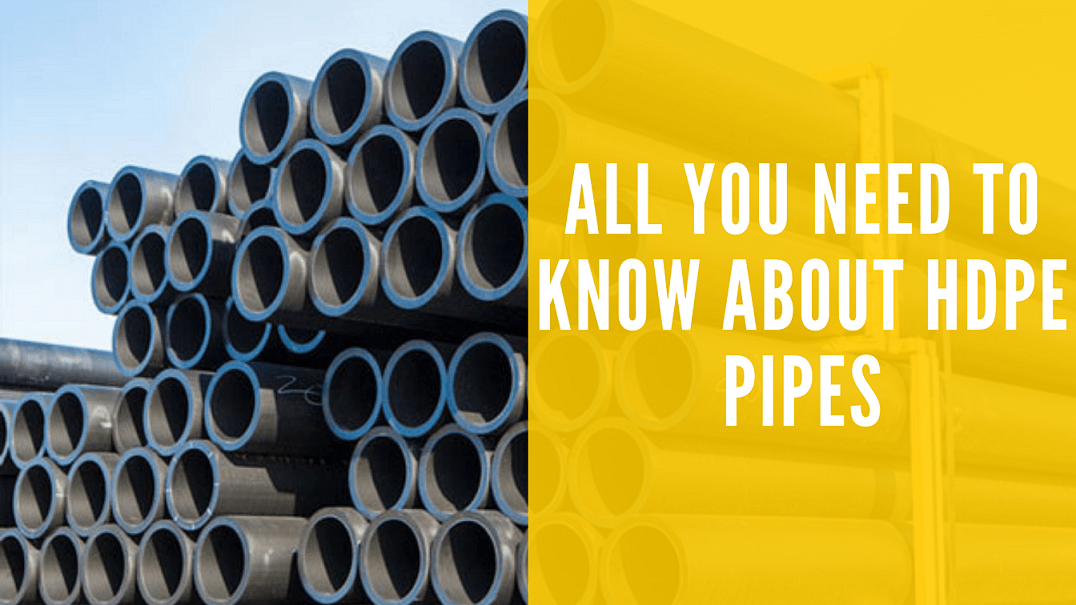5 Things to Know About HDPE Pipes

It isn't just the best HDPE pipe manufacturers in Dubai who know that HDPE pipes are the most excellent option on the market; consumers worldwide are also realising this material's potential.
To learn more, read on for five things you need to know about HDPE pipes.
1. HDPE pipes are well suited for high demand applications.
As a result of their durability and superior temperature, chemical, and impact resistance, HDPE pipes are well suited for high demand projects. For instance, HDPE pipes are the best option for projects involving fire system supply lines, water, sewer and gas mains, and electrical and communications wiring and cabling.
In fact, HDPE pipes have a long history of being utilised in the oil, mining, and gas industries as they can carry chemicals, wastewater, compressed gases, slurries, and hazardous wastes. After all, the pipes are rust-proof, corrosion-, chemical- and UV-resistant, immune to bacteria, and unlikely to leak.
Moreover, in addition to being durable, HDPE is also astonishingly flexible and lightweight, making it more straightforward to transport and install than other materials. Not only does this make it easier (and safer) to use these pipes and fittings, but it also decreases the amount of time and labour required to install them.
2. HDPE pipes are ideal for drainage systems.
No matter what kind of drainage application you need, HDPE drainage systems are ideal. These HDPE pipes and fittings are produced according to the latest industry standards. Additionally, they can be assembled along with electro-fusion, butt-fusion, flanges or rubber ring joints.
When you opt for an HDPE drainage system from a high-quality, reputable plastic manufacturing company, you will find that it can resist chemicals and high temperatures, as well as being flexible and low noise.
Because of these characteristics, these HDPE drainage systems are especially suited for residential and industrial buildings, laboratories, hospitals and hotels.
3. HDPE pipes are the most sustainable option.
In addition to being some of the most practical and robust options on the market, HDPE pipes are also the most sustainable.
Unlike other pipe materials, HDPE is highly biodegradable and easily recyclable, decreasing the material's environmental impact. Moreover, new HDPE pipes are made from recycled materials ranging from 25 percent to 100 percent pre-consumer material.
And, if that wasn't enough, the production process for HDPE pipes only requires a fraction of the energy needed to produce other pipe materials (like steel).
For all of these reasons, HDPE pipes are deemed to be the most eco-friendly options on the market. This is demonstrated by the fact that HDPE is considered a sustainable building material and is required for LEED certification.
4. HDPE fittings are also ideal for a variety of projects.
In many cases, your project may require both pipes and fittings. In both cases, HDPE is the ideal material, as HDPE fittings are also considered to be highly reliable. In fact, for pipelines that transport high-pressure liquids, HDPE fittings are crucial. For this reason, HDPE fittings are usually employed for projects related to mining, irrigation, and municipal drinking water installations.
As they are used in a wide array of projects, there are more than 12 different styles of HDPE fittings. This means that you should be able to find the HDPE fittings that you need whatever your project; however, it is also possible to have fittings custom-made for you.
Some varieties of HDPE fittings that exist are bend-molded applications (plumbing, gas, and drinking water projects), reducer applications (engineering, industrial, and construction projects), long neck applications (structures, gas, and hydraulic projects), and wafer butterfly valve applications (liquid and gas projects)
Similar to HDPE pipes, there is a range of sizes of HDPE fittings available on the market. The size of fitting that you require will depend on the pipeline size to which it will be attached (usually between 20mm to 650mm).
5. HDPE pipes and fittings rarely need to be repaired.
In addition to all the other benefits that this material brings, HDPE pipes and fittings also boast the lowest repair rate per year when compared to other piping materials. This should come as no surprise, as polyethylene is tough, solid, and incredibly durable.
Therefore, whether you prioritize long service, ease of installation, flexibility, chemical resistance, or sustainability, you can be sure that HDPE pipes and fittings will satisfy all your requirements.
Final Thoughts
Choosing your HDPE pipes and fittings is an important decision that will have a lasting impact on your project.
For this reason, it is highly recommended that you only opt to purchase these pipes from a highly reputable plastic manufacturing company that has years of experience and plenty of happy customers. Unfortunately, if you don't choose the highest quality pipes possible, you can't be guaranteed all the benefits high-quality HDPE pipes provide.
If you have questions about selecting suitable HDPE pipes and fittings for your project, reach out to a reputable plastic manufacturing company to inquire about their offerings.
